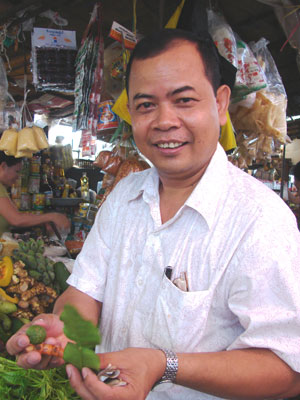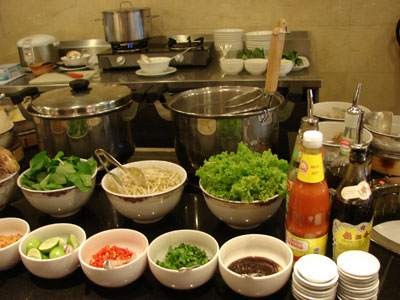What's Cooking in... Cambodia
This item appears on page 57 of the April 2013 issue.
John and I have been to Cambodia twice, and we love Cambodian, or Khmer, cuisine.
As in most places, the food of Cambodia has been influenced by other countries. For instance, one can find foods in Cambodia derived from Indian curries that are served with Chinese-style noodles. However, it is still a very distinct cuisine with its own flavor. I always think of Cambodia as the place where spicy Thai food merged with the more bland food of Vietnam.
People love to have visitors show an interest in their food, and cooking experiences are an excellent way for travelers to learn about a country’s culture. Consequently, cooking classes are offered by many hotels, including the InterContinental Phnom Penh (296 Boulevard Mao Tse Toung, Phnom Penh 00000, Cambodia; phone +855 23 424888 or, in the US, 800/261-9168).
In January 2011 we stayed at this hotel, where the accommodations cost us $129. Our cooking class was gratis; a Khmer cooking class usually costs $25 per person.
Chef San Sinith began our class with a trip to the central market, a typical wet market, to purchase the ingredients needed for our recipe. At a wet market, everything is fresh, from the fish to the cilantro. First-time visitors to a wet market will experience a Cambodian grocery shopping trip unlike any other, so it is good to have a chef — or a guide — along to identify some of the items and explain their uses.
According to Chef San Sinith, many spices have special health benefits. I have always liked ginger as a flavoring, but I was surprised to learn that it can reduce inflammation, helps alleviate motion sickness and can reduce the severity of migraine headaches.
Back at the hotel, Chef San showed us how to make a local Khmer favorite: Katiev (or Kuy teav) Phnom Penh, or Phnom Penh Noodle Soup. Normally, it is made with marinated chicken, but other meat or fish can be used. It is enjoyed anytime of the day.
Chef San said, “Cambodian food is one of the world’s healthiest cuisines because it uses very little fat and lots of fresh vegetables, fruits and seafood, deriving its flavor from spices and aromatic herbs.”
Fixings
1 lb boneless chicken, cubed
2 garlic cloves, sliced
2 tbsp sugar
4 tbsp soy sauce
Garnishes
1 tbsp cilantro leaves
½ lb bean sprouts
1 baby bok choi, sliced
½ lb flat rice noodles, cooked
Broth
4 cups chicken broth
4 cups beef broth
2 cloves garlic, diced
1 onion, sliced
1 finger-size piece of fresh ginger root, peeled and sliced
1 star anise, whole
¼ cup shredded cabbage
Spice bag containing 1tbsp each of fresh cilantro, basil and mint
Place broth ingredients in a large pot and simmer for one hour. Remove spice bag and star anise. In a wok or skillet, stir-fry chicken with garlic, sugar and soy sauce until the chicken is cooked, about 5 minutes. (Shrimp, pork or beef can also be used.)
Microwave the bok choy and bean sprouts until tender, 2 to 3 minutes. (A variety of precooked vegetables can be substituted.)
To serve, put the cooked noodles in a bowl, add the stir-fried chicken and veggies, then pour the hot broth into the bowl. Top with cilantro leaves and serve with hoisin, diced chili and/or peanut sauce.



